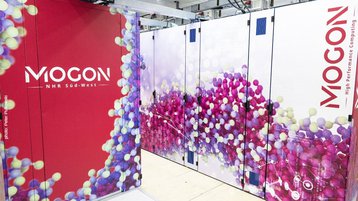IBM spin-off Kyndryl has completed the live migration and relocation of Mainz University Medical Center’s data center to another on-premise facility.
The migration, a project dubbed IPSUM (IT Infrastructure, process, and service optimization of Mainz University Medical Center), was completed in under four weeks and managed without any downtime.
According to Kyndryl, this involved moving 500 virtual systems and 70 physical systems, while protecting the highly sensitive data.
The University’s website details a central data center (Zentrum für Datenverarbeitung, ZDV) on campus that provides for ‘all departments and institutions of the university’ through 10,000 connectors and 500 Wireless LAN access points. In October 2022, Data Center Group announced that it had been selected to build the university’s new data center, stating that the group expects to hand it over to the university in 2023 and 2024 once the computing center has been relocated.
"The relocation of a data center during ongoing operations was a special challenge for us. As part of the critical infrastructure, we cannot afford to have any system failures," said Dr. Christian Elsner, commercial director at Mainz University Medical Center.
"Another challenge was the very tight time frame of only four weeks. Kyndryl supported us optimally in this project, and we were able to migrate all systems and sensitive data on time, without any outages or security issues."
Mainz has also replaced its old hardware, thus reducing power consumption by 20-25 kVA.
The IPSUM project has several phases, the data center migration being the first. In May 2023, the Medical Center will be inaugurating its new office spaces as part of phase two.
The Mainz Medical Center is located at the Johannes Gutenberg University Mainz in Germany. The facility includes a 1,500-bed hospital and an outpatient which treats more than 280,000 patients annually. The center was a previous partner with IBM, deploying a hybrid strategy using IBM Cloud Satellite and Red Hat Openshift on IBM Cloud.
Johannes Gutenberg University Mainz inaugurates MOGON supercomputer
This month also saw Johannes Gutenberg University introduce its new high-performance computing (HPC) cluster.
Named MOGON NHR, the HPC is the result of a €7.5 million ($8m) investment from the National High-Performance Computing program of the German federal and state governments and is a development of the university's previous MOGON-II. The HPC has 590 nodes with 75,000 CPU cores and a main memory of 186 TB. It also has two AMD processors (AMD Epyc 7713) per node, with 64 cores per processor. 10 computing nodes are equipped with four A100 each for special HPC workloads, and the computing nodes are interconnected via an HDR Infiniband network.
The HPC is expected to help the institution to conduct research in the fields of high-energy physics, condensed matter physics, and life sciences. Whether the HPC will be housed in the university’s new data center has not been specified, but seems likely.


